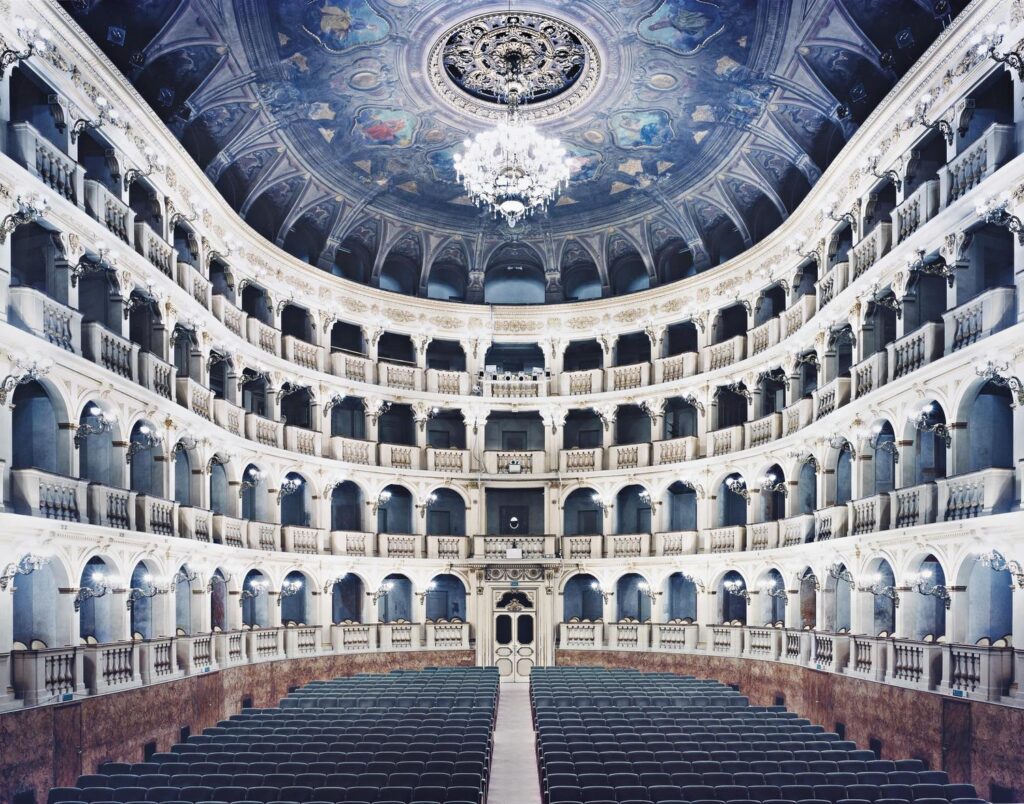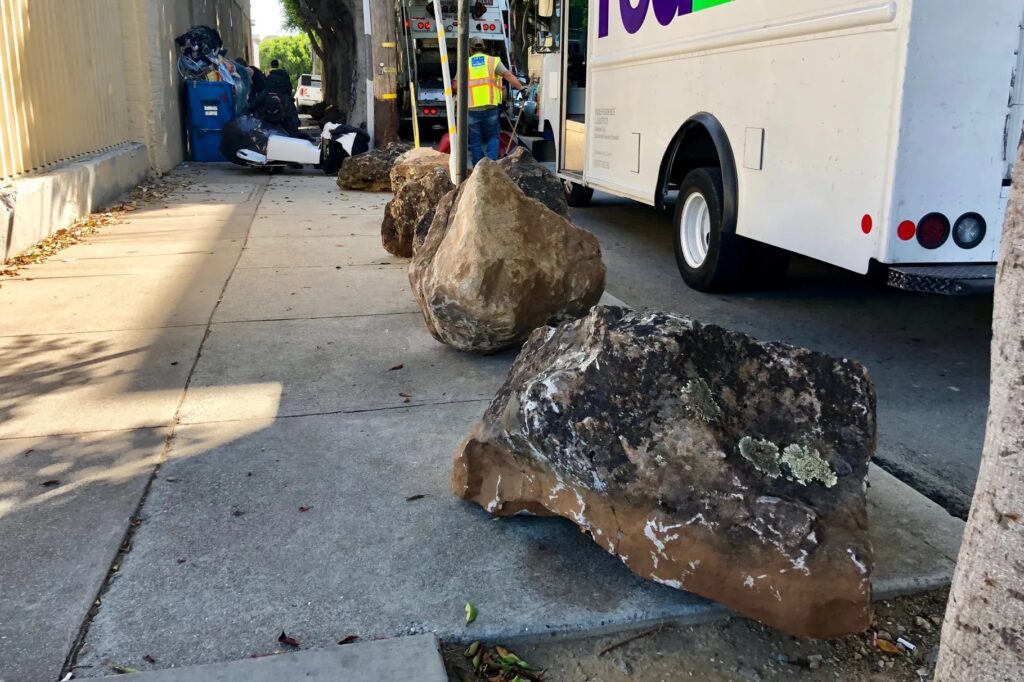THe crisis of public space: anti-homelessness architecture
SARAH WALCOTT AND CAROLINE BOIES
Around the world, public spaces are being redefined. As urban areas continue to develop and expand, a debate has grown over the definition of public spaces, for whom they are intended, and where they can exist. What we have found is that a combination of explicit and implicit developments define public space as designed for the wealthy and by the wealthy, actively excluding groups considered to be “undesirable”.

Candida Höfer’s photograph of the Teatro Comunale di Bologna captures the theater’s elegance. A deeper dive into the history of one of Italy’s most famous opera houses reveals that this theater was one of the first to be built with public funds and owned by the municipality. Despite tax dollars from citizens being spent on a “communal theater,” it remained accessible to only the wealthiest people.
Teatro Comunale di Bologna (taken by Candida Höfer)
This debate over public space and who it is created for relates to politics in San Francisco as well. In recent years, the crisis of people experiencing homelessness has dominated San Francisco. As Silicon Valley and other financial hubs took over surrounding areas, the disparity between the uber-wealthy and people experiencing homelessness grew worse. Public spaces such as sidewalks, parks, benches, and more, have increasingly become hostile architecture.
(video source: CBS Mornings)
In 2022, the San Francisco Chronicle reported over 7,800 people experiencing homelessness in the city, many of whom are unsheltered. As this number continues to grow, so too does the presence of hostile architecture. Examples include slanted/curved benches, rocky pavements, spiked window sills, tiered seating, boulders, and much more. Hostile architecture is a way to redefine public space to exclude people experiencing homelessness. A prime example of this appears in the photo of the corner of Dolores and Valencia Streets where a row of boulders block the sidewalk. These boulders represent the crisis faced by San Francisco, and how instead of creating real solutions, the city is attempting to push people experiencing homelessness out of neighborhoods through hostile architecture.
Sidewalk in Clinton Park, San Francisco (source: SF Curbed)

As the gravity of San Francisco’s situation grew, Mayor London Breed declared a state of emergency. Intended to implement crucial laws and waive bureaucratic hurdles quickly, many see Breed’s declaration as nearly impossible due to the presence of NIMBYism in San Francisco. “NIMBYs” represent a group of people who oppose new high-density and low-income housing developments, usually in attempts to preserve the aesthetic of their neighborhoods. This movement is detrimental to solving the crisis of people experiencing homelessness. As the NIMBY movement gains momentum, so does the development of hostile architecture. It is increasingly clear that public space is not truly serving the public, but instead forcing certain populations out, and the government is failing to implement real solutions to help these people.
“To continue to make progress addressing homelessness in San Francisco, we need to take bold actions that require the partnership of City leaders, the public, nonprofits, the private sectors, and collaborations at all levels of government”
— London Breed, Mayor of San Francisco
Bibliography:
Brinklow, Adam. Photograph. San Francisco, 2019. https://sf.curbed.com/2019/9/26/20885447/clinton-park-boulders-homeless-san-francisco-tent-camps.
“Candida Höfer.” SKNY. Accessed March 30, 2023. https://www.skny.com/artists/candida-hofer.
Höfer, Candida. Teatro Communale di Bologna I. Photograph. 2006. http://emuseum-2022.hamilton.edu/objects/8095/teatro-comunale-di-bologna-i?ctx=5e537cf0f43927de0812c5ac39201e9eaa119b24&idx=864.
Street, Andrew. “Hostile architecture is turning our cities against us.” Indesign Live. March 4, 2020. https://www.indesignlive.com/ideas/hostile-architecture-is-turning-our-cities-against-us
“How Silicon Valley’s Housing Boom Is Creating a Homeless Crisis.” YouTube. December 7, 2017. https://www.youtube.com/watch?v=0fgTjiY-HUQ.
“Mayor Breed Announces Five-Year Strategic Plan That Sets Bold Goals to Address Homelessness in San Francisco.” Sf.Gov. April 14, 2023. https://sf.gov/news/mayor-breed-announces-five-year-strategic-plan-sets-bold-goals-address-homelessness-san.
“Mayor London Breed Declares State of Emergency in the Tenderloin.” Sf.Gov. December 17, 2021. https://sfmayor.org/article/mayor-london-breed-declares-state-emergency-tenderloin.
McFadden, Christopher. “15 examples of ‘anti-homeless’ hostile architecture common to cities.” Interesting Engineering. April 8, 2023. https://interestingengineering.com/culture/15-examples-of-anti-homeless-hostile-architecture-that-you-probably-never-noticed-before.
Rezal, Adriana and Erin Caughey. “Key facts about homelessness in San Francisco.” San Francisco Chronicle. June 29, 2022. https://www.sfchronicle.com/projects/2022/fixing-san-francisco-problems/sf-homelessness-data.
Tilley, Jennifer and Gary Potter. “Social Exclusion and Public Space.” EKU Online. June 24, 2014. https://ekuonline.eku.edu/blog/police-studies/social-exclusion-and-public-space/.
Location
198 College Hill Rd
Clinton, NY 13323
United States
Pages
Contact us
swalcott@hamilton.edu
cboies@hamilton.edu
Proudly powered by WordPress